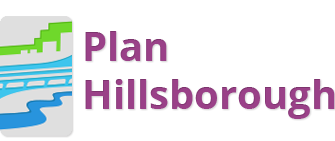 June 2020 – Affordable Housing and Transit Oriented Development (TOD) are increasingly being discussed as a paired challenge facing planners for good reason. Housing and transportation represent the first and second largest expenditures for a majority of U.S. households (Center for Transit Oriented Development, 2014). According to the U.S. Department of Housing and Urban Development, an estimated 12 million renter and homeowner households pay more than 50% of their annual incomes for housing, “if a family pays more than 30% of their income for housing, it is considered a cost burden” (U.S. Department of Housing and Urban Development, 2020). Likewise, the economic, public health, and environmental cost of congestion continues to rise. Americans lost 99 hours a year each due to congestion, costing them nearly $88 billion in 2019, an average of $1,377 per year.
June 2020 – Affordable Housing and Transit Oriented Development (TOD) are increasingly being discussed as a paired challenge facing planners for good reason. Housing and transportation represent the first and second largest expenditures for a majority of U.S. households (Center for Transit Oriented Development, 2014). According to the U.S. Department of Housing and Urban Development, an estimated 12 million renter and homeowner households pay more than 50% of their annual incomes for housing, “if a family pays more than 30% of their income for housing, it is considered a cost burden” (U.S. Department of Housing and Urban Development, 2020). Likewise, the economic, public health, and environmental cost of congestion continues to rise. Americans lost 99 hours a year each due to congestion, costing them nearly $88 billion in 2019, an average of $1,377 per year.
To get ideas for addressing this challenge, the MPO staff researched examples from other communities and drafted a case studies report which can be found here. You can send comments on this preliminary draft to Alvaro Gabaldon at mpo@plancom.org. Affordable housing and TOD projects each require a unique set of conditions to come to fruition, and integrating these requires more than just combing the best practices of each. A review of the literature finds they are often studied separately from one another. The resulting conclusions and policy recommendations provide a good foundation to start, but understanding the unique challenges of creating affordable housing in proximity to transit requires a more niche inquiry into the interaction (and often times conflict) between various land use and transportation policies.
The cities, and transit oriented affordable housing development examples, reviewed in this report are commonly cited throughout the literature as successes.
Key Findings
A myriad of challenges face agencies, municipalities, and developers seeking to undertake transit oriented affordable housing developments. Paramount to this challenge is understanding the role planning takes in helping these projects come to fruition. The research takes different approaches to creating this understanding, which in of itself underlines the “cause vs effect” feedback loop that stakeholders might fall prey to. Did the presence of transit spur development, or did an affordable housing development create the opportunity for transit? Regardless of a starting point, the case studies presented often point to a concurrent planning process as the most effective.
A core challenge to these developments comes from the organizational separation of the governing bodies that develop the policies and funding opportunities for them. For example, “federal requirements do not explicitly require the integration of planning for affordable housing and TOD” (Dawkins & Buehler, 2010). These organizational silos exist across government agencies and departments as well as between the local, state, and federal levels. This can add complexity to the planning process. In the case of the successful example cities presented later in this report, each one describes a high level of coordination between area transit agencies, housing authorities, and community development organizations to align on criteria and interact with developers and community members alike. Another common solution (at the state level), exemplified by Arizona, Washington, and Massachusetts, included collaboration between the Departments of Housing and Transportation to update Qualified Allocation Plans for Housing Credits to include criteria related to transit proximity (Hersey & Spotts, 2015).
The unique development costs or risks that are associated with these projects may also be restrictive. “Infill TOD often faces higher development costs than comparable ‘greenfield’ projects” and can prove prohibitive for “even market-rate TOD” (Hersey & Spotts, 2015). Agencies and governments have developed various solutions and approaches to this problem, like the aforementioned QAP transit criteria. In one example, Cleveland’s BRT line mitigated TOD costs by providing initial investment in “improved streetscapes and utility infrastructure” along its route that developers cited as essential for creating more density (Breakthrough Technology Institute, 2008). Another popular approach is the creation of additional funding sources for TOD like the Denver Regional Transit-Oriented Development Fund, Arlington’s Transit Oriented Affordable Housing Fund, or Local Initiatives Support Corporation Boston’s Equitable Transit-Oriented Development Accelerator Fund. These funds are also prominent examples of collaboration between transit, housing, and CDC organizations.
TOD also contends with the market’s and developers’ perception of “permanence.” This tangibly refers to how permanent a transit system’s service will be, but also to the financial and political commitment behind these projects. These indicators give developers a sense of the risk behind projects and can be seen in bias exhibited for projects involving light rail compared to bus-oriented development (Currie, 2006). A key insight given this dynamic is that mode bias can be overcome by other factors including inter-agency collaboration to create plans, policy, and funding opportunities that reinforce a commitment to these projects (Breakthrough Technology Institute, 2008).
When agencies, governments, and community members come together to create a portfolio of policy and financial solutions to support these projects, transit oriented affordable housing is an accomplishable goal.
